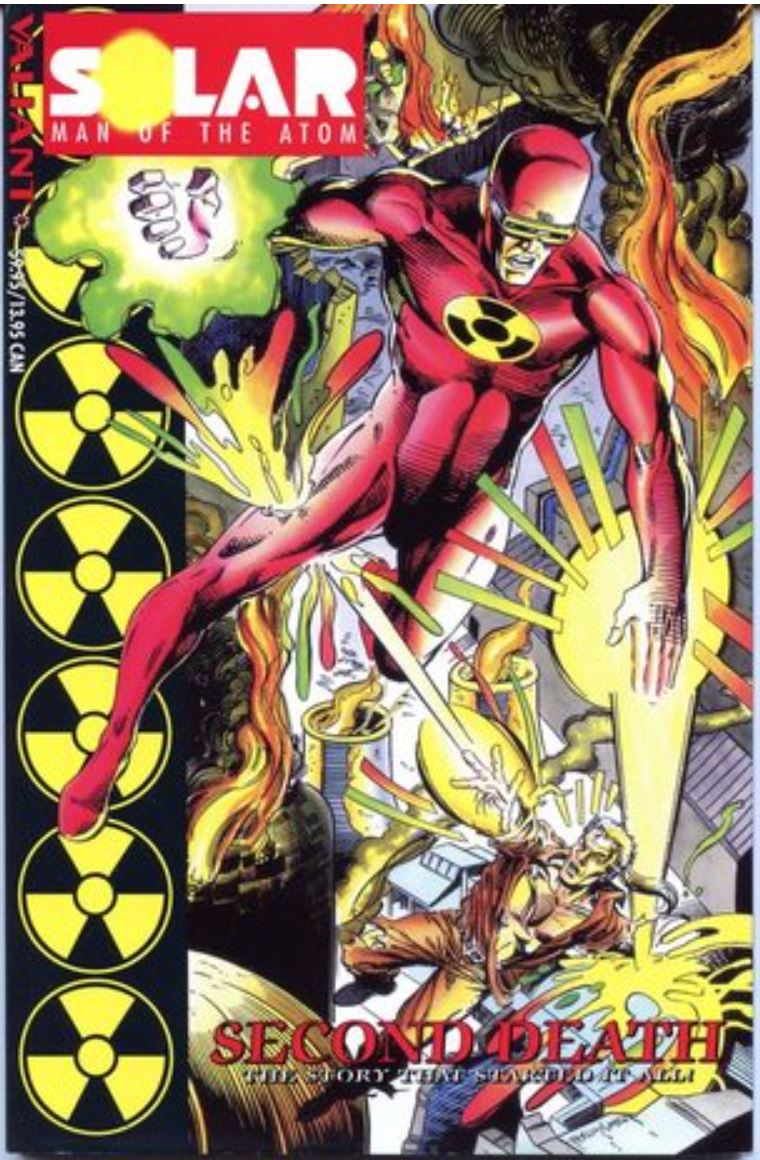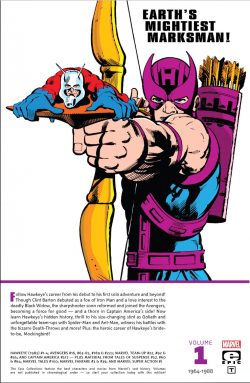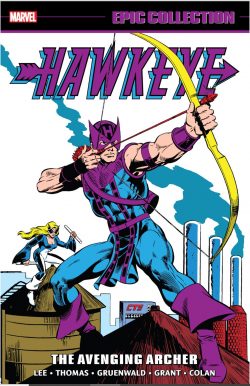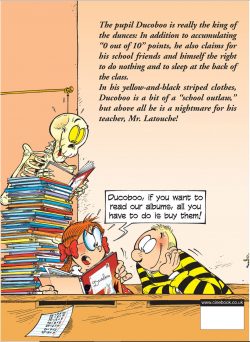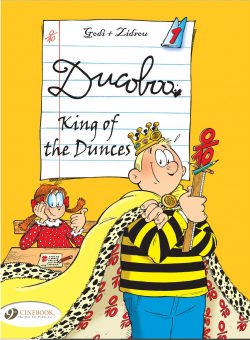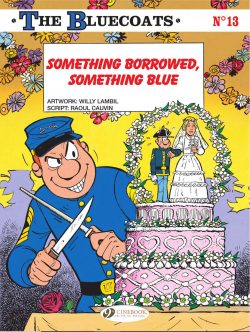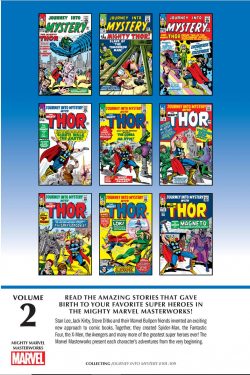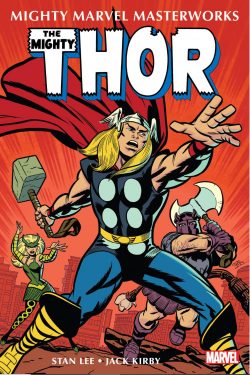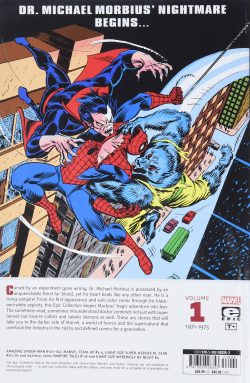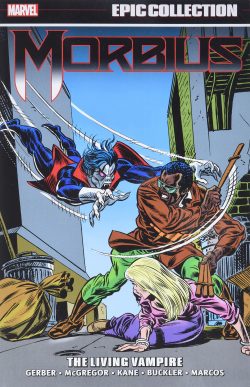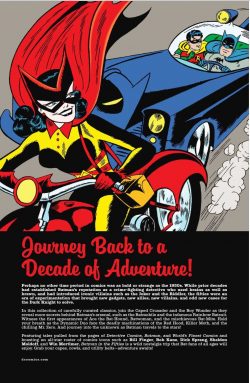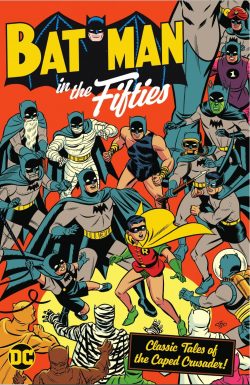

By William Moulton Marston & Harry G. Peter, with Gardner F. Fox, Jack Burnley, Frank Godwin, Joe Gallagher & various: curated & edited by Roy Thomas (Chartwell Books)
ISBN: 978-0-7858-3284-3 (HB)
Without doubt Wonder Woman is the very acme of female role models. Since her premier she has permeated every aspect of global consciousness, becoming not only a paradigm of comics’ very fabric but also an affirming symbol to women everywhere. In whatever era you observe, the Amazing Amazon epitomises the perfect balance between Brains and Brawn and, over decades, has become one of a rarefied pantheon of literary creations to achieve meta-reality.
In 2019, fans celebrated the 80th anniversary of Batman’s debut in Detective Comics #27. A year after that dynamic debut his astounding popularity resulted in the launch of Batman #1 (cover-dated “Spring” and released April 25th 1940). Back then, only precursor/stablemate Superman was more successful, but it wasn’t long before one half of the company that became todays DC Comics delivered another timeless game-changing icon…
Wonder Woman was born on the cusp of a year and a new age, and fans have argued about her debut date ever since. Her first appearance was in late 1941, buried and shoe-horned in without fanfare into top-selling All-Star Comics (#8): home of the mighty Justice Society of America. However, as revealed here by Roy Thomas, she was intended to launch later, in Sensation Comics #1, but events overtook her and her creators…
Once the war in Europe and the East snared America’s consciousness, crime and domestic deviltry increasingly gave way to combat and espionage themes. Patriotic imagery dominated most comic book covers – if not interiors – and the USA’s mass-publishing outfits geared up for joining the seemingly inevitable conflict.
I feel – like many of my era and inclinations – that superhero comics were never more apt or effective than when wholeheartedly combating global fascism with explosive, improbable excitement courtesy of a myriad of mysterious, masked marvels. I have similar thoughts about the early 1970s “relevancy period”, when my heroes turned to tackling slum landlords, super-rich scum, social injustice, crushing poverty and environmental issues: at least we won that one and don’t have to face real atrocities like that anymore, right?
Somehow, the genre’s most evocatively visceral moments seemingly come when gaudy gladiators soundly thrashed – I hope you’ll please forgive the appropriated and now truly offensive contemporary colloquialisms – “Japs and Krauts”. Wonder Woman was actually designed to do so an,d again, Thomas’ editorial comments provide historical revelations throughout…
A companion to volumes featuring Superman and Batman, Wonder Woman: The War Years 1941-1945 is superb hardcover archive curated by Thomas, exclusively honing in on the Amazing Amazon’s’ euphoric output from those war years, even though in those long-ago dark days, comics creators were wise enough to offset and counterbalance their tales of espionage and imminent invasion with a barrage of home-grown threats as well as gentler or even more whimsical four-colour fare…
Marshalled here is material from All-Star Comics #8,11, 15, 20, 24, 27; Sensation Comics #1, 2, 4, 5, 9, 10, 12, 13, 15, 16, 20, 21, 24, ; Wonder Woman #1-3, 5, 7, 11, 12; Comic Cavalcade #1-2 and excerpts from the short-lived Wonder Woman newspaper strip, cumulatively covering Winter 1941 to Winter 1945. The comics stories, snippets, ads, features and patriotic covers are augmented throughout by essays or brief critical analyses. Champion and grandmaster of WWII-era material, Thomas opens with a scene-setting Introduction and prefaces each chapter with essays establishing tone and context before the four-colour glories commence with Part 1: The War Comes to Paradise Island…
For decades, the official story was that the Princess of Paradise Island was conceived by psychologist/polygraph pioneer/showman William Moulton Marston: a calculated attempt to offer girls a positive and forceful role model and – for forward-thinking Editor M.C. Gaines – a sound move to sell more funnybooks to girls. From a teaser shot in All Star Comics the Amazon immediately catapulted one month later into her own series and the cover-spot of new anthology Sensation Comics.
An instant hit, Wonder Woman won her own title six scant months later (cover-dated Summer 1942). That start (or was it a savvy contract? …see inside for more details!) enabled the Star-Spangled Sensation to weather the vicissitudes of the turbulent comics marketplace. Ultimately – beside Superman, Batman and a few lucky hangers-on who inhabited the backs of their titles – she survived far beyond the Golden Age of costumed heroes…
We now know Wonder Woman was a team – if not truly communal – effort, with Moulton Marston acting in conjunction with his remarkable wife Elizabeth and their life partner Olive Byrne. Moreover, barring a couple of early fill-ins by Frank Godwin, the vast majority of outlandish, eccentric, thematically barbed adventures they collectively penned were limned by classical illustrator Harry G. Peter; a man personally hired ay the writers, not the editors.
This stunning compilation is part of a series introducing and exploring the historical and cultural pedigree of venerable DC icons. Sadly, it’s only available in hardback, but it offers a sequence of sublime snapshots detailing how Diana of the Amazons evolved and thrived in a war setting that challenged traditional roles of women: back when the entire gender was generally regarded as second class, second rate, painfully functional or strictly ornamental.
‘Introducing Wonder Woman’ was a hidden extra in All Star Comics #8 (December 1941/ January 1942): It led directly to ‘Wonder Woman Comes to America’: her formal debut in Sensation Comics #1 (January 1942).
In combination they reveal how, once upon a time on a hidden island of immortal super-women, US Army Intelligence aviator Steve Trevor crashes to Earth. Near death, he is nursed back to health by young, impressionable Princess Diana…
Fearful of her besotted child’s growing obsession with the creature from a long-forgotten and madly violent world, Diana’s mother Queen Hippolyte reveals the Amazons’ hidden history: how they were seduced and betrayed by brutal men and saved by goddess Aphrodite, on condition that they forever isolate themselves from the mortal world and devote their eternal lives to becoming ideal rational beings.
However, once Trevor explains the perfidious spy plot which accidentally brought him to the Island enclave and how the world is in crisis, Athena and Aphrodite instruct the Queen to send an Amazon back with the American to fight for global freedom and liberty. Hippolyte declares an open contest to find the best candidate and – despite being forbidden to compete – closeted, cosseted masked Diana clandestinely overcomes all to become their emissary.
Accepting the will of fate, her worried mother outfits Diana in the guise of Wonder Woman; sending her to Man’s World carrying an arsenal of super-scientific and magical weapons…
Here, that origin is also retold in extracted ‘Wonder Woman Daily Comic Strips’ from June 12-17, 1944. The strip was a relative late entry, running from May 8th 1944 to December 1st 1945. It never found a solid audience or secured a Sunday Colour section…
Fronted by a stunning H.G. Peter, cover and leading from the front in her own series, Diana truly debuted in anthological Sensation Comics #1. The origin resumes in ‘Wonder Woman Comes to America’’ as the eager, culture-shocked immigrant returns recuperating Trevor to Man’s World, before incidentally trouncing a gang of bank robbers and briefly falling in with a show business swindler.
An intriguing innovation was the newcomer buying her secret identity from lovelorn Army nurse Diana Prince: elegantly enabling the Amazon to remain close to Steve whilst the heartsick trained medic joined her fiancé in South America. Even with all that going on, there was still room for Wonder Woman and Captain Trevor to stop a spy ring using poison gas on a Draft Induction centre. Typically, Steve breaks his leg and ends up in hospital again, where “Nurse Prince” looks after him…
Sensation #2 (February 1942) introduced deadly, toxic enemy agent ‘Dr. Poison’ in a cannily crafted tale with plenty of twists and surprises, which also debuted the most radical comedy sidekicks of the era…
The plucky, fun-loving gals of the Holliday College for Women and their rotund, chocolate-gorging Beeta Lamda sorority-chief Etta Candy would get into trouble and save the day in equal measure for years to come: constantly demonstrating Diana’s – and Marston’s – philosophical contention that girls, with the correct encouragement, could accomplish anything that men could…
With the War raging espionage and sabotage were inescapable plot devices. Diana arranged a transfer to the office of General Darnell as his secretary, so that she could keep a closer eye on the finally fit Steve. Her new position with Army Intelligence created a big problem, but she little suspected that, although painfully shallow Steve only had eyes for the dazzling superwoman, the General had fallen for mousy but supremely competent Lieutenant Prince…
Unlike most comics of the period, Wonder Woman followed a tight continuity. School for Spies’ in Sensation #4 sees American girls, who had become enemy agents, murdered by way of introducing inventive genius and Nazi master manipulator Baroness Paula von Gunther. She employs psychological tricks to enslave girls to her will and set otherwise decent Americans against their homeland. Even Diana initially succumbs to her deadly machinations until Steve and the Holliday Girls crash in…
‘Wonder Woman versus the Saboteurs’ (Sensation Comics #5 May) closes the first section as America’s newest submarine is saved from destruction and a cunning gang of terrorists is brought to justice, after which an essay detailing how and why Wonder Woman joined the JSA and her role in their wartime exploits opens Part 2: The War Comes to America.
That’s followed by selected pages from All-Star Comics #11 (June/July 1942) as ‘The Justice Society Joins the War on Japan’. All-Star featured individual chapters for each team member, and here a page from the Hawkman section by Gardner Fox & Jack Burnley sees the Winged Wonder and future Hawkwoman Shiera Sanders meet Diana Prince on a medical troopship headed for the besieged Philippines. It’s followed by the full Fox & Peter crafted chapter starring the Amazon as she routs Japanese troops trying to establish a beachhead, and concludes with 2 more Burnley pages as she is officially inducted int the team as they rename themselves the Justice Battalion of America for the duration…
The next major landmark was the launch of the Amazon’s solo title. “Moulton” & Peter handled the launch of quarterly Wonder Woman #1 (Summer 1942), represented here by short espionage mystery yarn ‘Wonder Woman Goes to the Circus’ wherein Diana solves bizarre serial murders of the show’s elephants…
The covers to Sensation Comics #9 & 10 (September & October) segues into the lead story from the latter. ‘The Railroad Plot’ celebrates Steve and Wonder Woman’s first anniversary – which they celebrate by exposing a sinister plan devised by Japanese and German agents to blow up New York using the labyrinth of subway tunnels under the city…
Peter’s iconic cover for Sensation Comics #12 (December 1942) precedes Part 3: Against the Axis: and an essay detailing with the worst moments of the real war and the morale boosting efforts of America’s home front entertainers.
Then Wonder Woman #2 (Fall 1942) follows in full: Peter’s cover backed up by photo feature ‘The Men Behind Wonder Woman’ and an illustrated prose feature about ‘The God of War’ before 4-part epic ‘The Spirit of War’ introduces the Astounding Amazon’s greatest nemesis: ‘Mars, God of War’. The deadly divinity had instigated the World War from his HQ on the distant red planet, but chafes at the lack of progress since Wonder Woman entered the fray on the side of the peace-loving allies.
He opts for direct action rather than trust his earthly pawns Hitler, Mussolini and Hirohito…
When Steve goes missing, Diana orchestrates her own capture and is ferried to Mars. Here she disrupts the efficient working of the war-god’s regime: fomenting unrest amongst the slave population, before rescuing Steve and heading home to Earth. ‘The Earl of Greed’, one of Mars’ trio of trusted subordinates, takes centre stage in the second chapter with orders to recapture Steve and Diana at all costs.
As the bold duo infiltrate Berlin, Greed uses his influence on Hitler to surreptitiously redirect the German war effort, using Gestapo forces to steal all the USA’s gold reserves…
When Steve is gravely injured, the Amazon returns to America and – as he recuperates – foils the Ethereal Earl’s machinations to prevent much-needed operating funds reaching Holliday College where young girls learn to be independent free-thinkers…
With Greed thwarted, Mars next dispatches ‘The Duke of Deception’ to Earth, where the spindly phantom impersonates Wonder Woman and frames her for murder. Easily escaping prison, the Princess of Power not only clears her name but also finds time to foil a Deception-inspired invasion of Hawaii, leaving only ‘The Count of Conquest’ free to enact Mars’ orders.
This scheme is simple: through his personal puppet Mussolini, the Count tries to physically overpower the Hellenic Heroine with a brutal giant boxing champion, even as Italian Lothario Count Crafti attempts to woo and seduce her. The latter’s wiles actually work, but capturing and keeping the Amazon are two entirely different affairs. Breaking free on the Red Planet, Diana delivers a devastating blow to the war-machine of Mars…
This issue ends with a sparkling double page patriotic plea as ‘Wonder Woman Campaigns for War Bonds and Stamps’…
Fans could not get enough Wonder Woman and she next became a big draw in new project: a huge and spectacular 96-page card-cover anthology package based on DC’s World’s Finest Comics and highlighting AA’s other big guns Flash and Green Lantern, plus a string of lesser luminaries. At this time National/DC enjoyed an editorially-independent business relationship with Max Gaines that involved shared and cross promotion and distribution for comic books released by his own All-American Publications outfit. Although technically competitors if not rivals, the deal included shared logos and advertising and even combining both companies’ top characters in All Star Comics as the Justice Society of America.
However, by 1942 relations between the companies were increasingly strained; and would culminate in 1946 with DC buying out Gaines, who used the money to start EC Comics.
Thus, A-A created its own analogue to World’s Finest, featuring only AA characters. The outsized, outstanding result was Comics Cavalcade…
Cover-dated December 1942/January 1943 Wonder Woman’s fourth regular residency began with the company superstar solving the ‘Mystery of the House of the Seven Gables’ – as ever, the fruits of Marston & Peter’s fevered imaginations – wherein Diana Prince stumbles upon a band of Nazi spies. As was so often the case, the Amazing Amazon needs the help of some plucky patriotic youngsters to quash the submarine-sabotaging barbarians…
The January 1943 cover for Sensation Comics #13 and a roll call of members from All-Star Comics #15 February/March 1943 leads to Part 4: Don’t You Know There’s a War On? via a text treatise on comic book covers and Home Front occupations.
Comics sagas resume with ‘America’s Guardian Angel’ from Sensation #12 which finds the Warrior Princess accepting an offer to play herself in a patriotic Hollywood movie, only to learn the production had been infiltrated by the insidious Paula von Gunther and her gang of slave-girls…
‘Wanted by Hitler Dead or Alive’ comes from Comic Cavalcade #2 (Spring 1943), pitting Wonder Woman against devious gestapo agent Fausta Grables and her own purloined magic lasso. It’s one of very few stories not limned by H.G. Peter but the work of illustrator and strip cartoonist Frank Godwin, stepping in as the crushing workload of an extra 64-page comicbook every couple of months piled the pressure on WW’s artistic director.
It’s followed by the cover and story from Sensation #15 (March) with HGP on top form as ‘Victory at Sea’ pits Diana Prince and Steve against murderous saboteurs set on halting military production…
The patriotic H.G. Peter cover for Sensation Comics #16 is followed by a key excerpt from Wonder Woman #5 (June/July 1943). As previously mentioned, the Amazing Amazon was a huge and ever-growing hit, and her solo title frequently innovated with full-length stories, and rather radical themes. This extract – the opening chapter of interlinked epic the ‘Battle for Womanhood’ – had repercussions for the cast for decades to come.
War-god Mars returned to plague humanity directly, this time enlisting the aid of a brilliant but physically deformed and intellectually demented woman-hating psychologist with psychic powers. The very model of a true sexual predator, tormented Dr. Psycho uses his gifts to marry and dominate a medium named Marva, employing her unique abilities to form ectoplasmic bodies to attempt the enslavement of every woman on Earth. Allegorical or what, huh?
Dated August & September 1943, the covers of Sensation Comics #20 & 21 lead into the latter’s gripping tale – once again drawn by Godwin. As the war turned in favour of the Allies overseas, Steve and Wonder Woman tracked down an insidious traitor dubbed the American Adolph as he conducted a murderous ‘War Against Society’
The final section explores an end of hostilities and new challenges and enemies explained by Thomas in Part 5: Victory in Sight with Sensation Comics #24 (December 1943) leading the charge to triumph with Marston & Peters’ ‘Adventure of the Pilotless Plane’. Steve is abducted by Japanese agents whilst investigating a new gas weapon preventing US aircraft from flying. The vile villains have nothing that can stop Wonder Woman from smashing them and freeing him, however…
Wonder Woman #7 offered an optimistic view of the future in a fantastic fantasy tale of America in the year 3000AD: a utopian paradise ruled by a very familiar female President. It’s represented here by its vibrant cover and supplemented by a Joe Gallagher drawn public service ad from All-Star Comics #20 Spring 1944 to combat polio: ‘Justice Society of America – the March of Dimes’, before the cover for Wonder Woman #11 (Winter 1944) brings us to stories’ end and ‘The Invasion of Paradise Island’ (Sensation Comics #37 January 1945) wherein maltreated county orphans stow away to the Amazon’s home, just in time to help repel a U-boat full of Nazis unwilling to accept their war is over…
A triptych of visual treats wraps up the history lesson: firstly the cover of Wonder Woman #12 followed by PSA page ‘Wonder Woman Explains Waste Paper Salvage’ from All-Star Comics #24 (both from Spring 1945), and finally the cover of All-Star Comics #27 (Winter 1945) honouring disabled war veterans.
Because I’m me, I can’t stop without a minor quibble, so please be warned, the Contents Pages here have mis-listed a couple of things. What’s there is just as good, and individual page credits DO attribute everything that’s here accurately – just don’t expect to see a Junior Justice Society of America Ad’ or ‘The Secret of Baroness Von Gunther’ from Wonder Woman #3. You can, however, find them in other collections, so you now have a reason to look at more books…
The story of the American comic book industry – in almost every major aspect – stems from the raw, vital and still powerfully compelling tales of DC’s Trinity icons: Superman, Batman and Wonder Woman. These wartime tales cemented their popularity, bringing inspiration and hope to millions during a time of tremendous hardship and crisis. Even if these days aren’t nearly as perilous or desperate – although many aren’t so sure anymore! – the power of such work to rouse and charm is still potent and just as necessary. You owe it to yourself and your family and even your Kanga to Buy This Book…
™ & © 2015 DC Comics. All Rights Reserved.
